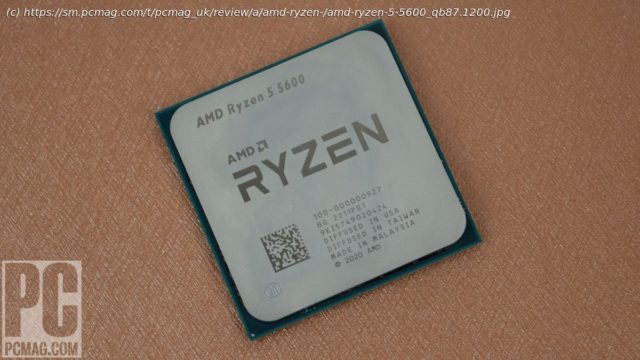Sweet six-core CPU performance at $199…if you have a graphics card
AMD’s AM4 platform may be nearing the end of its life, but that’s not stopping the company from releasing fine-tuned new processors for it. Launching this month is the Ryzen 7 5800X3D, which is AMD’s first CPU with 3D V-Cache technology and a likely harbinger of future chip designs. A number of slightly less glamorous chips are also hitting the street, such as the Ryzen 7 5700X that aims to offer more value than the older 5800X. The same idea goes for the new Ryzen 5 5600, whose $199.99 price undercuts the slightly beefier Ryzen 5 5600X by $100. But with market pressures pushing down the price of the 5600X, and the 5600 featuring a slightly lower clock speed, this new processor is more of an alternative choice than a clearly better one. But given the original is a great pick, this one is solid, too. Design: One Megabyte Short of an X Like all other AMD Ryzen 5000 series processors, the Ryzen 5 5600 features a core based on the “Zen 3” microarchitecture, built on TSMC’s 7-nanometer FinFET process. The Ryzen 5 5600 contains a total of six CPU cores with simultaneous multiprocessing technology (SMT) that lets it operate on a total of 12 threads at a time to achieve greater overall utilization and performance. This makes the Ryzen 5 5600 nearly identical to the Ryzen 5 5600X released in 2020, but there are a few notable differences. The Ryzen 5 5600X has a base clock of 3.7GHz and can run at a maximum speed or boost clock of 4.6GHz. The new 5600 drops those frequencies to 3.5GHz and 4.4GHz respectively. This change is relatively minor and shouldn’t make the Ryzen 5 5600 feel too different in day-to-day tasks, but its slightly lower performance is clearly observable in benchmark tests. (Much more about that below.) In creating the Ryzen 5 5600, AMD also trimmed the chip’s Level 3 cache a bit. Crafting microprocessors is an imperfect process, and a minor defect can cause part of a chip to not function properly even if the rest of the silicon works fine. It would be wasteful and costly to toss out these slightly flawed chips, which is why virtually every manufacturer presses imperfect processors into service as lower-end products. This is what’s happened with the Ryzen 5 5600, which was likely destined to be a Ryzen 5 5600X but failed to pass quality-control tests due to a slight RAM issue, which was resolved by disabling a portion of the L3 cache. This resulted in the 5600 having just 31MB of L3 cache compared to the 5600X’s 32MB. This change is intriguing, as AMD doesn’t typically alter the cache size of its CPUs. Typically, when the company bins parts as lower-tier products, they disable cores and reduce clock speed but keep cache sizes untouched.






